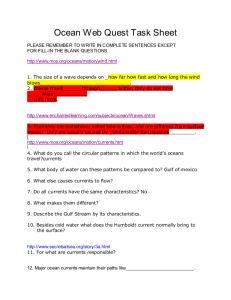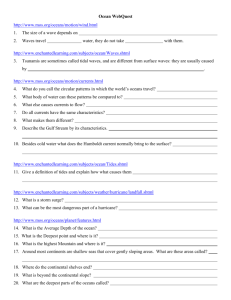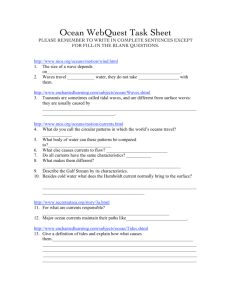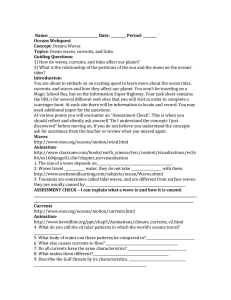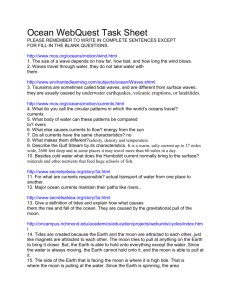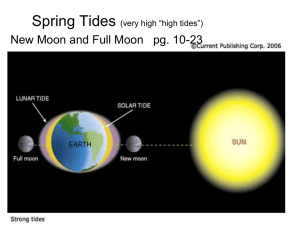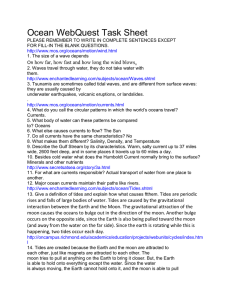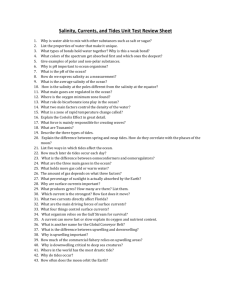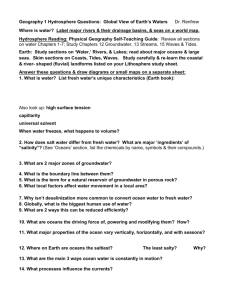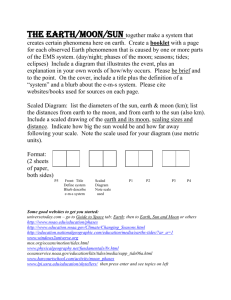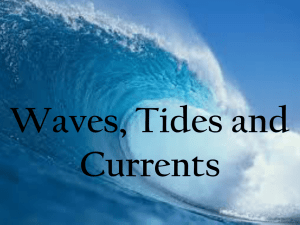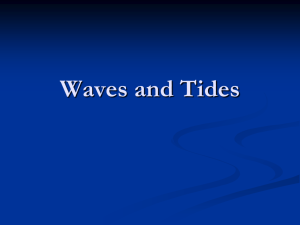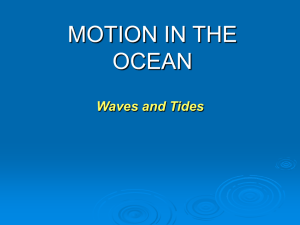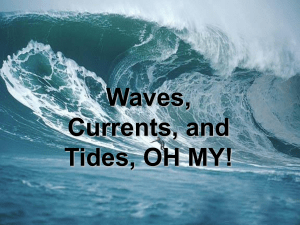Ocean Web Quest Task Sheet PLEASE REMEMBER TO WRITE IN
advertisement
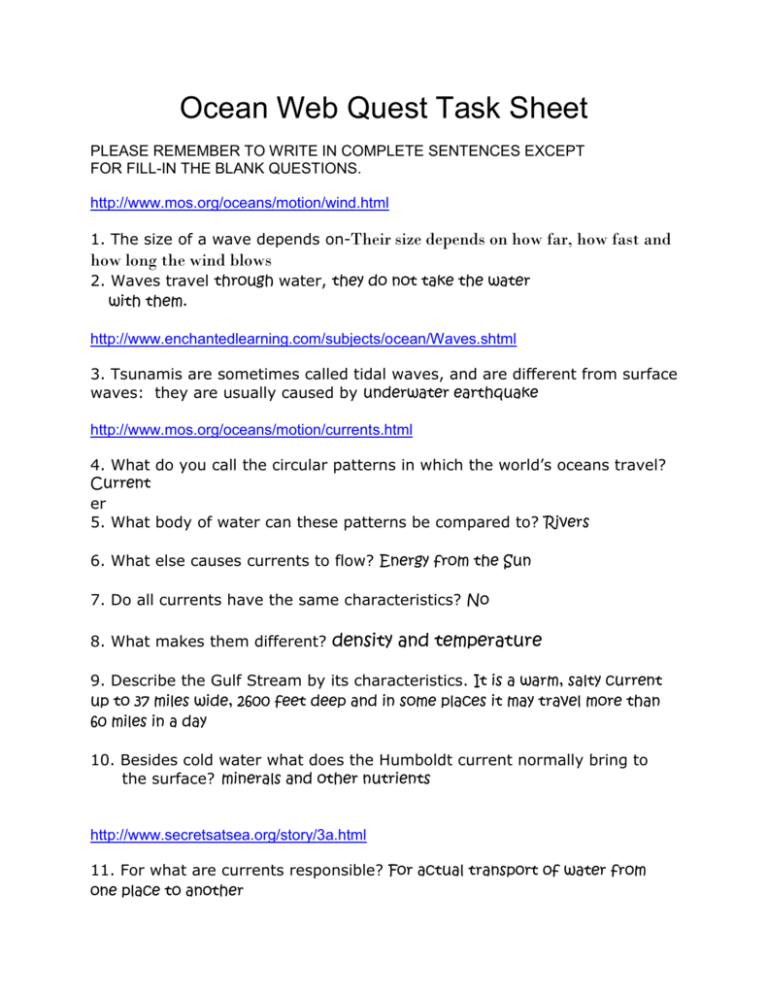
Ocean Web Quest Task Sheet PLEASE REMEMBER TO WRITE IN COMPLETE SENTENCES EXCEPT FOR FILL-IN THE BLANK QUESTIONS. http://www.mos.org/oceans/motion/wind.html 1. The size of a wave depends on-Their size depends on how far, how fast and how long the wind blows 2. Waves travel through water, they do not take the water with them. http://www.enchantedlearning.com/subjects/ocean/Waves.shtml 3. Tsunamis are sometimes called tidal waves, and are different from surface waves: they are usually caused by underwater earthquake http://www.mos.org/oceans/motion/currents.html 4. What do you call the circular patterns in which the world’s oceans travel? Current er 5. What body of water can these patterns be compared to? Rivers 6. What else causes currents to flow? Energy from the Sun 7. Do all currents have the same characteristics? No 8. What makes them different? density and temperature 9. Describe the Gulf Stream by its characteristics. It is a warm, salty current up to 37 miles wide, 2600 feet deep and in some places it may travel more than 60 miles in a day 10. Besides cold water what does the Humboldt current normally bring to the surface? minerals and other nutrients http://www.secretsatsea.org/story/3a.html 11. For what are currents responsible? For actual transport of water from one place to another 12. Major ocean currents maintain their paths like -Rivers. http://www.enchantedlearning.com/subjects/ocean/Tides.shtml 13. Give a definition of tides and explain how what causes them. Tides are periodic rises and falls of large bodies of water. Tides are caused by the gravitational interaction between the Earth and the Moon. http://oncampus.richmond.edu/academics/education/projects/webunits/cycles/index.html 14. Tides are created because the Earth and the moon are attracted to each other just like magnets are attracted to each other. The moon tries to pull at anything on the ______ to bring it __________. But, the Earth is able to hold onto everything ____________ ____ ___________. Since the water is always moving, the Earth cannot ______ onto it, and the moon is able to ______at it. 15. The side of the Earth that is facing the moon is where it is _________ tide. That is where the moon is ___________ at the water. Since the Earth is _________, the area that the moon is pulling at changes. That is why the tides _________. If you are at the beach, and the moon is pulling on the ocean there, it will be ________ tide. If the moon is pulling at the ocean somewhere else, then it will be _____ tide at the beach where you are. 16. How do we know that the water nearest to the moon forms a bulge? 17. Where else does the water form a bulge? 18. How many tides are there each day? 19. How much time is there between tides? http://www.enchantedlearning.com/subjects/weather/hurricane/landfall.shtml 20. What is a storm surge? 21. What can be the most dangerous part of a hurricane? http://www.mos.org/oceans/planet/features.html 22. What is the Average Depth of the ocean? 23. What is the deepest point and where is it? 24. What is the highest Mountain and where is it? 25. Around most continents are shallow seas that cover gently sloping areas. What are these areas called? 26. Where do the continental shelves end? 27. What is beyond the continental slope? 28. Describe the abyss. 29. What are the deepest parts of the oceans called?
